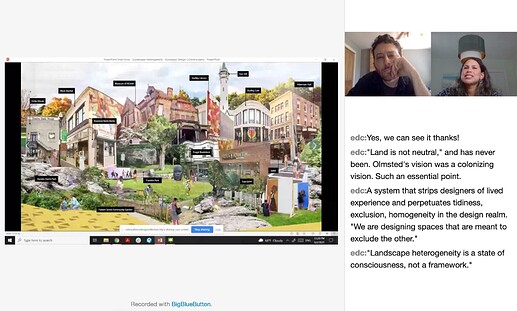Heterogeneous Futures:
Design Thinking Alternatives for Anthropologically and Ecologically Diverse Landscapes
Diana Fernandez, Sasaki Design
Thursday, September 2, 2021
12-1pm EDT
View the recording by clicking HERE.
“From the mountains of the Dominican Republic to the streets of NYC,” landscape architect Diana Fernandez writes, “I root myself as a designer in my lived experiences of space and place.” We spoke with Fernandez on "making space for inclusive futures that embrace and celebrate our differences in the physical manifestation of place.”
The latest in our 2021 monthly series on Race, Ecology, and Design.
Building upon principles rooted in landscape ecology, landscape heterogeneity presents an opportunity to embrace the concept of difference to build resilient and community focused landscapes. This dialogue exposes the interconnected relationship between ecology and the anthropological sciences. From the design of a public landscape to commemorate Black culture, to increasing ecological complexity in urban and suburban systems through planting, landscape heterogeneity creates a platform for change within the doctrine and practice of designing landscapes.
Diana Fernandez is a Senior Associate with the international environmental design firm Sasaki Design. A proven thinker, collaborator and leader, she works with architects, planners, urban designers, ecologists and civil engineers on the design of equitable and sustainable places. In 2020, she was awarded the Emerging Professionals Medal by the American Society of Landscape Architects.

